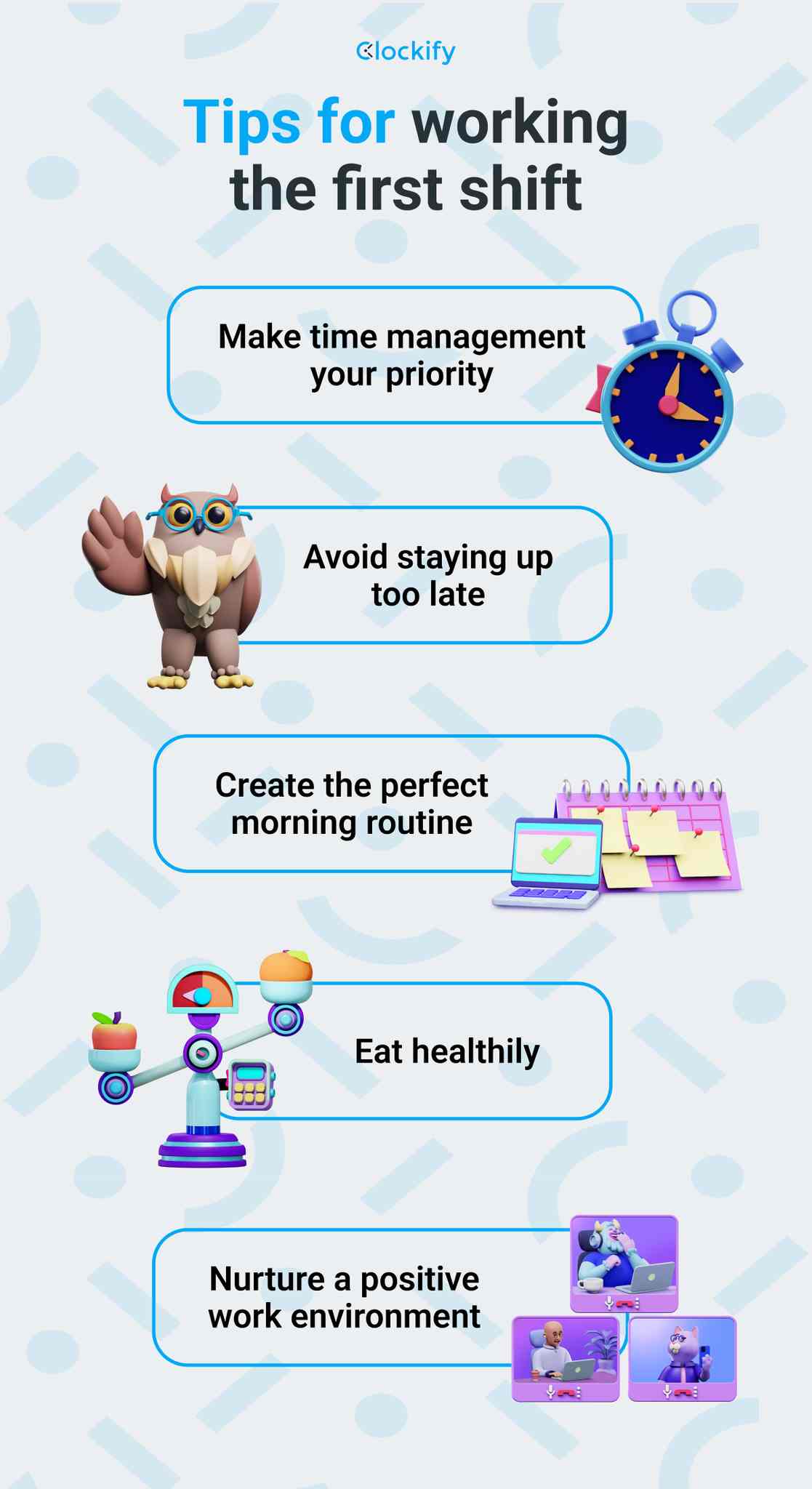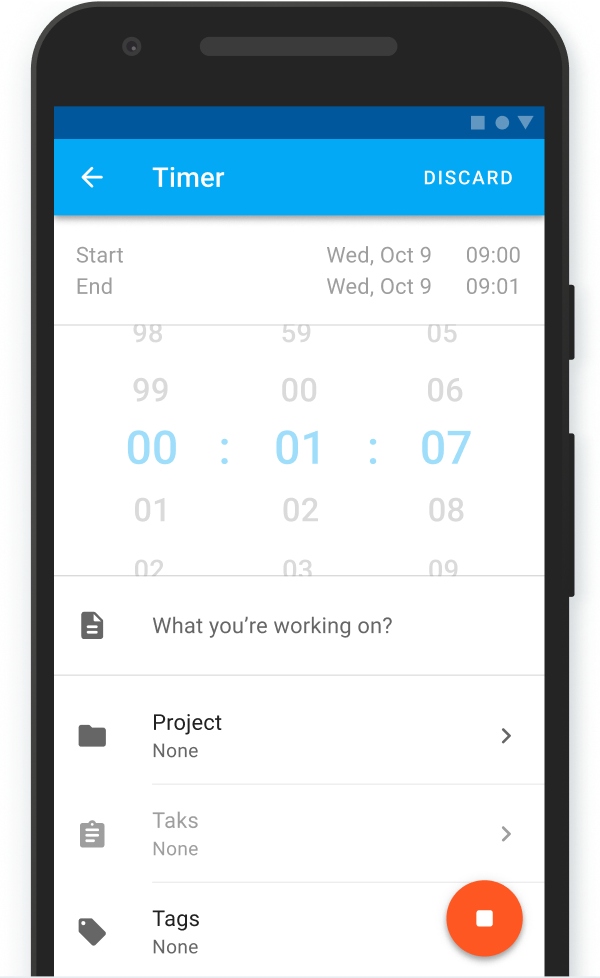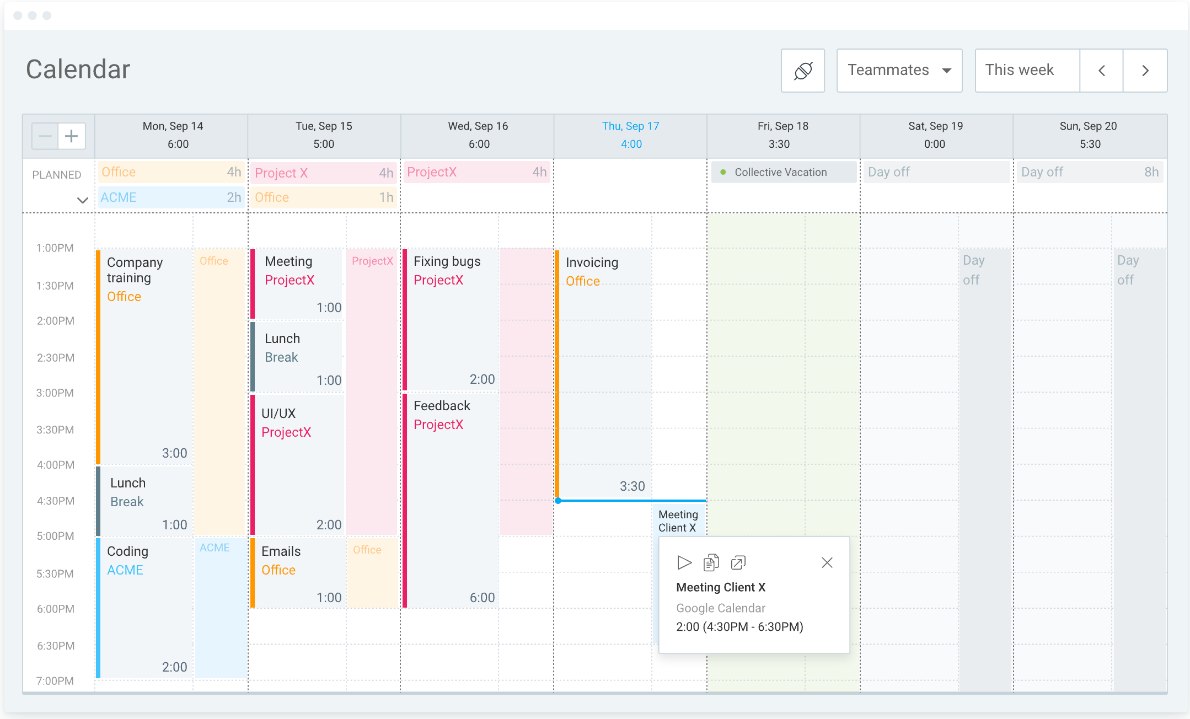As a youngster, I was a waiter at a local coffee shop. My typical schedule consisted of working the first shift — starting at 7 a.m. I really enjoyed getting up early and serving coffee to regulars who would kickstart my day with a few hilarious jokes.
In the 2 years of my waitering, I never asked myself, “What is the first shift?” Or, rather, ”What does the first shift mean for my health, productivity, and overall well-being?”
Writing this article, I got a chance to think about the benefits, drawbacks, and write about this topic from my perspective.
In this guide, we’ll discuss:
- First shift definitions,
- Typical first shift jobs,
- Benefits and drawbacks of the first shift, and
- Tips for being more productive during the first shift.
Let’s look at how you can make your first shift experience better.

What is a first shift?
First shift is a work shift where employees get to work in the morning and finish in the afternoon. Sometimes called day shift or morning shift, the first shift is the most common shift in the world.
First shift usually starts and ends during typical business hours (8 a.m. to 5 p.m.) — and that’s up next.
💡 Clockify Pro Tip
Explore the average working hours per country and century in this all-inclusive guide:
What are first shift hours?
First shift hours are work schedules that imply working from 8–9 a.m. to 4–5 p.m. Likewise, first shift hours are also known as morning shift hours or day shift hours.
Schedule your first shift tasks with Clockify
Employees on the first shift typically work 8 hours a day, with exceptions. For example, some workers — like those in the hospitality sector — have to arrive at work an hour or two before the start of operations to prepare everything for when the customers arrive.
For this reason, we can differentiate between early first-shift hours and traditional first-shift hours. To explain, early first-shift hours start between 5 a.m. and 7 a.m. On the other hand, traditional first shift hours start around 8–9 a.m.
💡 Clockify Pro Tip
Get a grip on your working hours with this handy guide on the 8-hour shift:
What are typical first shift jobs?
Some typical first shift jobs include:
- Pharmacists,
- Office workers,
- Postal employees,
- Construction workers,
- Store and hotel managers,
- Coffee shop and bakery employees,
- Electricians, plumbers, and cleaning staff.
Of course, there are other professions — but these are the ones where the first shift work schedule is most common.
💡 Clockify Pro Tip
Find out everything about what comprises a work schedule and why work scheduling is essential for any successful manager:
How does the first shift compare to the second and third shifts?
First shift hours are common in companies that don’t necessarily have to be open around the clock, like construction sites and coffee shops.
In contrast, second and third shifts are typical in businesses that operate 24/7. Some of these sectors may include:
- Retail,
- Healthcare,
- Manufacturing, and
- Emergency services (fire departments and law enforcement).
According to sleep expert Matthew Walker, around 30% of people are morning larks and an estimated 30% are night owls. In short, morning larks are employees with high energy levels in the morning, and night owls are workers with more energy in the late afternoon and during the night. Everyone else — the remaining 40% — falls somewhere in between.
As a result, early risers are better suited to work the first shift because that’s when they’re at their most productive. In contrast, the second and third shifts are best for folks who accomplish the most in the late afternoon and during the night.
Now, let’s recap all you have learned so far in an easy-to-read table.
| Shift type | Other common names | Typical business hours | Who’s it great for? |
|---|---|---|---|
| First shift | Day shift, early shift, morning shift | 8 a.m. – 5 p.m. | Morning larks or people with high energy levels in the morning |
| Second shift | Afternoon shift, late shift, evening shift | 4 p.m. – 1 a.m. | Night owls or people high in energy in the late afternoon and evening (or who like going to bed late) |
| Third shift | Night shift, midnight shift, graveyard shift | 11 p.m. – 7 a.m. | Night owls or people high in energy in the late afternoon and evening (or who like going to bed late) |
Next, we’ll get into all the advantages of day shift time.
💡 Clockify Pro Tip
Read about another common shift schedule called swing shift:
What are the benefits of working the first shift?
First shifters get to enjoy at least 5 powerful benefits of working the first shift, including how the first shift:
- Promotes meaning at and outside of work,
- Aligns nicely with the body’s natural clock,
- Provides a better work-life balance,
- Lets you better plan the week ahead, and
- Enhances productivity and alertness.
Let’s take a closer look at each of these benefits.
Benefit #1: First shift promotes work motivation
One of the major benefits of the first shift is that first shifters can sustain relationships with their family and friends more easily — creating a boost in meaning and purpose at work.
To make it more tangible, a 2022 study on non-standard work time found that employees who work traditional working hours (a nine-to-five) have more intrinsic motivation in contrast to workers working non-standard hours (night shifts or irregular schedules).
What does that mean?
Well, it simply means that employees on the nine-to-five schedule find their work more meaningful. As a result, if an employee is satisfied with their work life, they’re more likely to be happy with all other aspects of life — as they’ll spend more free time with friends and family.
💡 Clockify Pro Tip
Here’s a quick guide on why some people are at their peak productivity in the morning:
Benefit #2: First shift aligns better with the body’s natural clock
According to a 2023 analysis on shift work hazards, researchers discovered that people working non-traditional work hours — like nights, weekends, and evenings — had disrupted their natural sleep-wake cycle. And that’s a cause for concern. Yet, it’s nothing that first shifters have to worry about.
A managing director at Festoon House and a first shift worker himself, Matt Little, believes that nothing beats a good night’s sleep for a more refreshing morning:

“First of all, first shift hours help with your mental and physical health. Second, a good first shift can help your body’s natural circadian rhythm. A good night’s sleep is good for your overall health, so you’ll wake up feeling fresh and ready to go.”
And that’s not all.
Another positive health effect of the first shift was uncovered in a 2021 study. In the paper, a group of Croatian researchers found that first-shift nurses were more restful than their night-shift counterparts. Also, first-shift nurses had more stable cortisol levels than their colleagues working irregular shifts.
In contrast, the same study discovered that nurses on irregular shifts experienced higher levels of cortisol and prolactin — hormones that mess up the body’s natural clock.
In any case, the first shift does wonders for employees who settle for the traditional nine-to-five.
Benefit #3: First shift provides more work-life balance
We all want more time off. But this time may just be lying there, waiting for you to pick it up. Yes, we’re talking about how the first shift schedule provides more me-time after a hectic day at work.
The CEO of a field service company Klipboard and a first shifter himself, Draven McConville, thinks that the first shift is about syncing your clock with others in your environment:

“The first shift entails integrating your life with the outside environment. Most of your buddies clock out at the same time as you, so you can stop using the ’sorry, I’m working’ defense. Like everyone else, you get to enjoy your evenings while telling tales and making memories. It’s the gratifying sensation of synchronization with life’s beat.”
The president at Mammoth Security, Eugene Klimaszewski, believes that the first shift provides more personal time after all the hustle and bustle of his security work:

“Wrapping up early means my evenings aren’t all about work. From family time to that new book I’ve been meaning to read — it’s Eugene Time.”
Benefit #4: First shift lets you craft better work plans
“By failing to prepare, you are preparing to fail.” — Benjamin Franklin
One of the biggest benefits of the first shift is that it allows employees to create better work plans for the workdays or workweek ahead.
For example, imagine getting to the office on a Monday morning, ready to tackle your first shift. In this case, you’ll be able to make bulletproof plans for the period ahead thanks to being completely alert and focused as a morning lark — provided you’re one.
A manufacturing consultant at Levantar, Mark Greenhouse, drives the point home on the importance of visualizing what first shifters need to get done during the workweek:

“You get to think about the shift and the week ahead. Is there any training coming up? Are key staff on holidays? Any important sales visits taking place? Are there any key reports and audits to be produced, are these all planned in?”
Furthermore, Mark Greenhouse explains how planning the work period ahead could solve problems in advance:

“You get a chance to review the production schedule and see if there are any ’problem’ orders coming up during the week and consider how you’ll deal with them.”
All in all, the first shift lets you craft better, more achievable work plans, both in the short and long term.
Benefit #5: First shift enhances productivity and alertness
According to a 2023 article in the Entrepreneur magazine, employee creativity is highest at night, but their productivity is at its peak in the morning. That’s great news for morning larks’ work productivity.
Entrepreneur Priyanka Swamy — who’s also the founder of Perfect Locks — talks about the benefits of starting your work early:

“Our brains work best in the morning when we’re more alert and focused. This means you’ll be able to tackle difficult tasks with a fresh set of eyes, potentially resulting in better work quality. It’s like riding a natural wave of energy that sets the mood for the rest of the day.”
A security expert Eugene Klimaszewski — whom we mentioned earlier — agrees with this idea. As a first-shift employee, he says he loves the peace that comes with early mornings:

“Clear-headed beginnings: That peaceful morning atmosphere? It’s like a secret weapon. It sharpens my thoughts and lets me dive deep into work without the usual distractions.”
💡 Clockify Pro Tip
Learn about the latest stats on workplace distractions with our handy guide:
What are the drawbacks of working the first shift?
Some of the greatest drawbacks of working the first shift are:
- Not practical for night owls,
- Indicates a lack of instant team communication,
- Implies limited evening time,
- Suggests the possibility of getting stuck in traffic, and
- Implies fewer opportunities for pay raises.
Now, let’s explore each of those.
Drawback #1: First shift isn’t practical for late-nighters
The first shift isn’t practical for night owls or late-nighters, as it entails getting up early.
An entrepreneur Priyanka Swamy, whom we mentioned earlier, says that your natural clock could be caught off guard if you suddenly become an early riser:

“If you’re not a morning person by nature, it’s no surprise that waking up early can be a challenge. Your body’s natural circadian rhythm may take a bit of time to adjust to this new way of waking up. That initial groggy feeling can make it difficult to feel fully awake and alert, especially at the start of the day.”
Although he loves the first shift, a security expert Eugene Klimaszewski thinks that winter brings its fair share of second thoughts about the first shift, especially for late-nighters:

“Chilly starts: some mornings, especially in winter, make me yearn for a few more minutes under the covers.”
Drawback #2: First shift implies limited evening time
When I worked as a waiter, I usually served our customers during the first shift. But that always meant I had to go to bed no later than 10 p.m. Sometimes, I had to make painful compromises — my friends would stay up late, partying, but I was rarely lucky enough to join them.
An entrepreneur Priyanka Swamy says that avoiding evening socials is a byproduct of the first shift schedule:

“While early morning shifts give you plenty of time in the mornings and early afternoons, your afternoons may be shorter. This means that you may not be able to attend evening socials or attend events that take place later in the afternoon.”
Finally, you’ll be less likely to enjoy frequent nights out if you’re on the first shift — provided you care about late-night get-togethers in the first place.
Drawback #3: First shift indicates getting stuck in traffic
The fast-paced nature of the first shift is what you might expect — people rushing to get to the office, everyone’s trying to park in their favorite spots, and most people are generally full of energy.
Draven McConville, whom we mentioned earlier, explains how gridlock can push you to lose your patience:

“Being on the first shift will probably put you in the middle of rush hour traffic, which can be really annoying if you live far from your place of employment. We all experience the daily challenge of squeezing past a sea of brake lights, which puts your patience and radio station preferences to the test.”
💡 Clockify Pro Tip
Plunge into the fascinating world of commuters in this article:
Drawback #4: First shift implies fewer opportunities for pay raises
When a company provides the same compensation for all shifts, the employer may have issues finding workers to cover later shifts — like night shifts or irregular schedules.
As a result, pay differs based on which shift you work. For example, employees working between 6 p.m. and 6 a.m. typically get a night pay differential, according to the US Office of Human Resources Management. This simply means that the workers in question receive a 10% increase on top of their rate of basic pay.
In contrast, first shifters don’t get to enjoy such benefits, as theirs is a regular work schedule.
💡 Clockify Pro Tip
Explore what is a “good” pay raise and how to revise salaries every year in this all-inclusive guide:
Tips for working the first shift
Next, let’s dig into a few expert tips for making the first shift more productive and better for your overall well-being.
Here we’ll cover how to:
- Make time management your priority,
- Avoid staying up too late,
- Create the perfect morning routine,
- Eat healthy, and
- Nurture a positive work environment.
Let’s get into it.

Tip #1: Make time management your priority
If you’re not a morning person, but you’re still working the first shift, you need to manage your time like a pro. Easier said than done, sure — but hear us out.
We picked the brains of Jeff Mains — a seasoned entrepreneur and the CEO of Champion Leadership Group LLC — to better understand the importance of time management in working the first shift. Jeff says that tools and techniques are essential:

“Effective time management is key. Implementing well-defined processes, prioritizing tasks, and leveraging technology can streamline operations and reduce stress. Encourage your team to use productivity tools and techniques like the Pomodoro technique or project management software to maximize efficiency.”
Speaking of the Pomodoro technique, you can use Clockify Pomodoro Timer to track your work hours and breaks.

Here’s how the Clockify’s Pomodoro timer works:
- Start the timer,
- Work for 25 minutes,
- Stop working,
- Enjoy your 5-minute break, and
- Start the timer for another 25 minutes.
Yet, often, how and when you work won’t directly depend on your organizational skills but on the number of your incoming customers and your boss. But even in this case, you can use the Pomodoro timer for recurring tasks — when things are less crowded at work. For example, you can use the Pomodoro timer when you need laser focus to get some paperwork done.
💡 Clockify Pro Tip
Dive deeper into time management statistics to get a better sense of how people spend their time at work:
Tip #2: Avoid staying up too late
We all need a certain amount of beauty sleep. For example, the Centers for Disease Control and Prevention suggest that adults require more than 7 hours every day to be rested, refreshed, and alert.
Other respected organizations follow suit. For instance, the National Sleep Foundation in the US recommends between 7 and 9 hours for adults aged 18 and 64.
You can easily tell how getting enough sleep applies to first shifters. In fact, I can remember my time being a waiter and occasionally not getting the prescribed dose of sleep. The next day would often turn me into a groggy, impatient, mind-clouded mess.
A first-shift schedule requires accountability, so sleeping in late can cause trouble at work too — as I sometimes had to learn the hard way.
An entrepreneur Priyanka Swamy speaks to the benefits of a regular sleep routine:

“A good night’s sleep is essential for a restful and productive day. Develop a regular sleep routine and a relaxing pre-sleep routine to tell your body when it’s time to sleep. Avoiding screen time before bed and creating a comfortable and restful sleeping environment can go a long way toward improving sleep quality.”
Tip #3: Create the perfect morning routine
I didn’t have a consistent morning routine in my job as a waiter. I would just storm out of bed and get to work without even preparing myself physically and mentally for the day.
Now, my daybreak ritual consists of meditation, a quick stretch, and reading a physical book — emphasis on physical. These 3 simple morning habits have made me more productive in my first shift hours and rekindled my inner creativity.
An interesting article in the New York Times suggests that, before you start working, you should meditate for just a few minutes. Even 3 minutes is just fine.
For example, you can try a mantra meditation that’s been proven to:
- Benefit your mental health, and
- Reduce hypertension.
To that effect, you can simply repeat “in” as you inhale and “out” as you exhale. Every time a thought pops up, just refocus on the breath.
For illustration, an entrepreneur Matt Little suggests the surprising benefits of doing a set of practices consistently:

“To make the first part of your day easier, make the most of the sunrise with a few morning rituals. Eating a healthy breakfast, getting some exercise, and getting some sun in the morning are all great ways to start your day. Schedule your tasks the day before so you can get started right away.”
Whether you want to go on a run, meditate, or do some light stretching, you can use Clockify’s mobile app timer to track your morning routine:

If your personal timekeeping is at a high level, you can then create a more structured first shift schedule around that. As a result, you’ll be able to achieve both personal and professional SMART goals faster.
Tip #4: Eat healthily
One Finnish study found that repeatedly eating healthily increases engagement at work, where work engagement is defined as “a positive, fulfilling, work-related state of mind that is characterized by vigor, dedication, and absorption.”
In other words, if you eat healthy meals, you’re more productive.
A first shifter Draven McConville thinks that getting a nutritious first meal makes all the difference for your body and mind:

“With a healthy breakfast to energize your body and stimulate your mind, let your morning routine be the crescendo as the sun rises. It’s the crucial buildup to a brilliant day.”
To drive the point home, health expert at Nutrition Insights LLC, Kelsey Costa, lists a few items that comprise a nourishing meal:

“A balanced breakfast should include a mix of fiber-rich carbohydrates, protein, and healthy fats. To ensure all macros are well-represented, consider options such as eggs, avocados, soy products, nut butter or nuts, seeds, hummus, low-fat Greek yogurt, oatmeal, chia seeds, berries, quinoa, sweet potatoes, and sprouted grain toast.”
On the other hand, Kelsey Costa also explains what you should avoid eating when working the first shift — or any shift, for that matter:

“Avoid highly processed foods like store-bought muffins and scones, white bread, instant oatmeal, ’fruit-on-the-bottom’ yogurt, processed meats (like bacon and sausage), and low-fiber cereals. These selections are usually high in added sugar or unhealthy fats and low in essential nutrients, which can lead to inflammation, energy crashes, and hunger pangs before noon.”
Tip #5: Nurture a positive work environment
Even if you implement the first 4 tips, you may still continue to struggle with your first shift schedule. That’s why it’s critical to create a nurturing workplace where you respect others and others show the same respect back.
The entrepreneur and fellow first shifter we mentioned earlier, Jeff Mains, says that creating a nourishing atmosphere can boost morale and motivation:

“To make the first shift more comfortable and productive, it’s crucial to foster a positive work environment. This begins with strong leadership that sets clear expectations, provides support, and encourages open communication. Employees should feel valued and heard, which in turn boosts morale and motivation.”
For instance, managers need to feel in tune with their employees by:
- Lending a helping hand,
- Showing empathy when mistakes are made, and
- Doing everything to show that the employees’ work is essential to progress.
💡Clockify Pro Tip
Speaking of work environments and managers, learn more about creating and maintaining a teamwork culture:
Frequently asked questions (FAQ) about the first shift
Many people have different questions about which shift fits their productivity and well-being best. So, we collected a list of questions and answered them in more detail below.
Which work shift is best?
The best work shift is the one that factors in things like the employee’s:
- Sleep schedule,
- Financial needs,
- Productivity and energy levels, and
- Life commitments and personal preferences.
Ultimately, employees have to consider all personal and professional implications of working the first, second, or third shifts.
Is first or second shift better?
The first shift is better if you want more time to socialize in the afternoons.
Likewise, you may enjoy the first shift more if you don’t have any trouble getting up early and going to bed early.
In contrast, second shifters typically sleep in late and want more time to party into the night.
What are common shift types?
Common shift types include:
- First shift (or morning shift) — starts around 8 a.m. and ends around 5 p.m.,
- Second shift (or afternoon shift) — starts around 4 p.m. and ends around 1 a.m.,
- Third shift (or night shift) — starts around 11 p.m. and ends around 7 a.m.,
- Rotating shift — changes over time and includes 8–12 hour periods per shift,
- Swing shift — happens between daytime and overnight shifts for prolonged periods,
- Split shift — divides an 8-hour shift into 2 or more parts, and
- 2-2-3 schedule — 4 teams working for 2 days, resting for 2 days, and then working for 3 days, with each employee performing a daily 12-hour shift.
Build a first shift morning routine with Clockify
Working the first shift has plenty of benefits — one notable pro is more free time for yourself as you finish work earlier in the day. In addition, working the first shift aligns with your natural body clock and doesn’t disrupt the circadian rhythm, which aids your overall health.
So, if you are working the first shift yourself, consider using a reliable time tracking tool such as Clockify to make the perfect morning routine!
Clockify tracks all your activities and helps you optimize your workday. By clicking on an empty slot in your Clockify Calendar, you can create time blocks for each part of your morning routine and give them specific time frames.

Whether you want to check your email, schedule a meeting, or focus on deep work first thing in the morning, you can create a separate time block for each and keep track of them in Clockify.
Start your day the right way.


